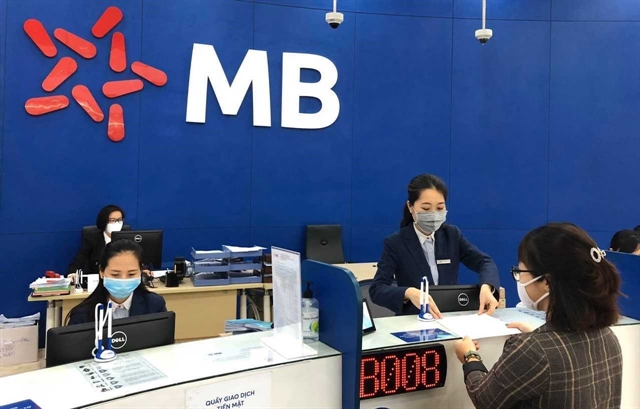 Economy
Economy


|
| Transactions at MBBank. The bank accelerated the handling of bad debts and increased risk provision in the first half of the year. — Photo courtesy of the bank |
HÀ NỘI — The Military Commercial Joint Stock Bank (MB) posted a record low bad debt ratio of 0.76 per cent in the first half of the year. This has been also the lowest level in the banking industry.
The information was released at the bank’s conference to review business results in the first six months of the year in Hà Nội on Saturday.
MB accelerated the handling of bad debts and increased risk provision in the six-month period. The ratio of the risk reserve fund to bad debts reached 311 per cent, more than double the level at the end of 2020. This means MB has a very high “defensive” ability when having bad debts. With the above results in terms of safety in terms of credit quality, MB and Vietcombank are the two banks with the highest ratio of bad debt provision in the entire banking industry.
Lưu Trung Thái, MB’s vice chairman of management board cum general director said by the end of June, the total asset of MB Group (including MBBank and subsidiaries) reached more than VNĐ524 trillion (US$22.7 billion), increasing 5.9 per cent from the beginning of the year. Of which, credit rose by 10.5 per cent to VNĐ340 trillion.
Its consolidated revenue in the January-June period exceeded VNĐ22.9 trillion, representing a 44 per cent year-on-year increase. Of which, the pre-provision revenue alone reached more than VNĐ14.6 trillion, up 44 per cent from the same period last year. MBGroup's pre-tax profit post high growth.
MB has also enjoyed a top business performance in the period with a return on asset (ROA) ratio of 2.48 per cent and a return on equity (ROE) ratio of 23.28 per cent.
The bank's governance indicators also maintained good levels like the cost-to-income ratio (CIR) of about 28.6 per cent, the non-interest income ratio of more than 30 per cent and the average before-tax profit per capita was 1.6 times higher than the same period last year.
Thái said its newly issued international credit card market share reached 17 per cent in the period, the highest level in the country. Its subsidiary companies also saw high business results, like Military Insurance Corporation (MIC) becoming among the top five insurers in the country.
Notably, MB has many outstanding products and services relating to digital transformation that contributed to its high growth in the period like MB SmartBank and opening a bank account on MB app through electronic know-your-customer (eKYC). It is expected that MB would have five million new users using its app by the end of this year, triple the figure in 2020.
MB has also donated more than VNĐ100 billion so far for the Government’s COVID-19 prevention efforts.
The Government issued Resolution No 63/NQ-CP on key tasks and solutions to promote economic growth, public investment disbursement and sustainable exports in the year-end months and the beginning of 2022. Of which, the Government asked the State Bank of Việt Nam to work with ministries to propose credit policies to support businesses, people and those affected by COVID-19.
Amid the pandemic’s complicated developments, both economic sectors and credit institutions face risks of increasing bad debt ratios. This is why each bank working to overcome difficulties to have positive business results is crucial.
Deputy Governor of the central bank, Đào Minh Tú asked banks to implement two targets of enhancing supports to the economy, businesses while ensuring the safety for the banking system not only in short-term but also medium and long term period. — VNS




